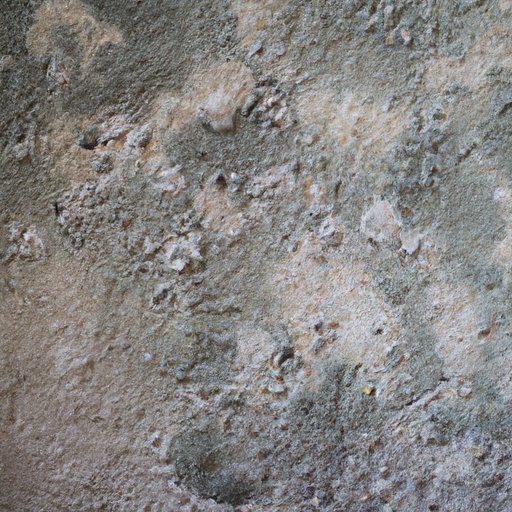
Introduction
Black mold, also known as Stachybotrys chartarum, is a type of fungus that thrives in damp, humid, and poorly ventilated areas. It’s typically black or dark green in color and often has a musty, earthy odor. While mold occurs naturally outdoors, indoor growth can be a serious concern. Exposure to black mold has been linked to various health problems, including respiratory issues, allergies, and even neurological symptoms. In this article, we’ll explore the causes, symptoms, prevention, removal, and the risks associated with black mold.
Causes and Symptoms of Black Mold Exposure
Black mold thrives in moist environments that lack adequate ventilation. It can grow on almost any surface, including wood, paper, and carpet. The most common sources of indoor black mold growth are due to water damage, like from a flood, leak, or high humidity levels.
Exposure to black mold can cause a variety of health issues. Symptoms can vary from mild to severe, depending on the duration and intensity of exposure. The following are common symptoms of black mold exposure:
- Coughing and sneezing
- Runny or stuffy nose
- Sore throat and postnasal drip
- Watery eyes or redness
- Wheezing and difficulty breathing
- Fatigue and headaches
- Brain fog, memory loss, and confusion
- Dizziness and nausea
- Joint pain and muscle aches
- Anxiety and depression
- Skin rashes and hives
Identifying Black Mold Infestation
If you suspect mold growth in your home, it’s essential to identify and address it as soon as possible. Here are some visual clues that can indicate the presence of black mold infestation:
- Visible black spots on walls, ceilings, or floors
- A musty odor that does not dissipate, even after ventilation
- Water damage to walls, floors, or ceilings
- Cold or damp rooms with poor ventilation
- Persistent symptoms of mold exposure
Preventing Black Mold Growth
The best way to protect yourself from black mold is to prevent its growth altogether. Here are some practical tips to help prevent black mold growth in your home:
Control the Moisture
Mold needs moisture to thrive, so controlling the humidity in your home is key. You should aim to keep the humidity level between 30% and 50% in your home. You can use a dehumidifier to regulate the humidity level or invest in an air conditioning system with a built-in dehumidifier.
Fix Water Leaks Immediately
Water leaks can lead to mold growth, so it’s crucial to fix them as soon as possible. If you detect a water leak, turn off the water source immediately and call a professional plumber to fix the issue. If the leak has caused water damage to your walls or floors, you’ll need to call a professional restoration service to remove the water and dry out the area.
Promote Good Ventilation
Proper ventilation can prevent moisture buildup, so it’s essential to ensure there’s adequate airflow throughout your home. You can crack open a window or use an exhaust fan to improve ventilation in the bathroom and kitchen.
Clean and Maintain Your Home Regularly
Keeping your home clean and well maintained can prevent mold growth. Regularly dust, vacuum, and mop your home to remove any dirt, dust, or debris that can become a breeding ground for mold.
How to Remove Black Mold
Removing black mold from your home can be a challenging and potentially dangerous task. Here are some steps to help you safely remove black mold:
Wear Protective Gear
Protective gear is crucial when dealing with black mold. Wear goggles, gloves, and a respirator to avoid inhaling spores or coming in contact with mold.
Isolate the Area
Before cleaning, isolate the mold-infested area to prevent the spread of spores. Close off any doors or vents with plastic sheeting and turn off your HVAC system.
Clean the Area
Use soap and water to clean the mold-infested area. Avoid using bleach, as it can cause more harm than good. After cleaning, allow the area to dry completely.
Remove and Dispose of Mold-Infested Materials
If mold has contaminated materials like carpets or drywall, you’ll need to remove and replace them. Seal mold-infected material in plastic bags and dispose of them immediately.
Seek Professional Assistance
If the mold infestation is significant or you’re experiencing severe health problems, seek professional help. A professional mold remediation service can assess the situation, offer guidance, and safely remove the mold from your home.
The Risks of Ignoring Black Mold
Ignoring black mold infestation can lead to serious health and safety issues. Here are some of the risks associated with ignoring black mold:
- Aggravated Asthma and Allergy Symptoms
- Neurological Symptoms like Headaches, Memory Loss, and Confusion
- Upper Respiratory Tract Infections
- Chronic Sinus Infections
- Development of Serious Lung Infections
- Damage to Your Home’s Structural Integrity
- Lower Property Value
My Black Mold Experience
I discovered black mold growth in my kitchen and had no idea what to do. I assumed that a good scrub of soap and water would do the trick, but I couldn’t have been more wrong. My symptoms only grew worse, and I knew I needed professional help. I contacted a mold remediation company to remediate the mold from my home. It was costly, but it was the best decision I ever made. My health has improved significantly since then, and I will never ignore black mold infestations in the future.
Conclusion
In conclusion, black mold can pose serious health and safety risks if not addressed promptly. Prevention is key, so it’s essential to keep your home free of moisture and well-ventilated. If you suspect mold growth in your home, don’t hesitate to seek professional help. Your health and safety are too important to ignore.





